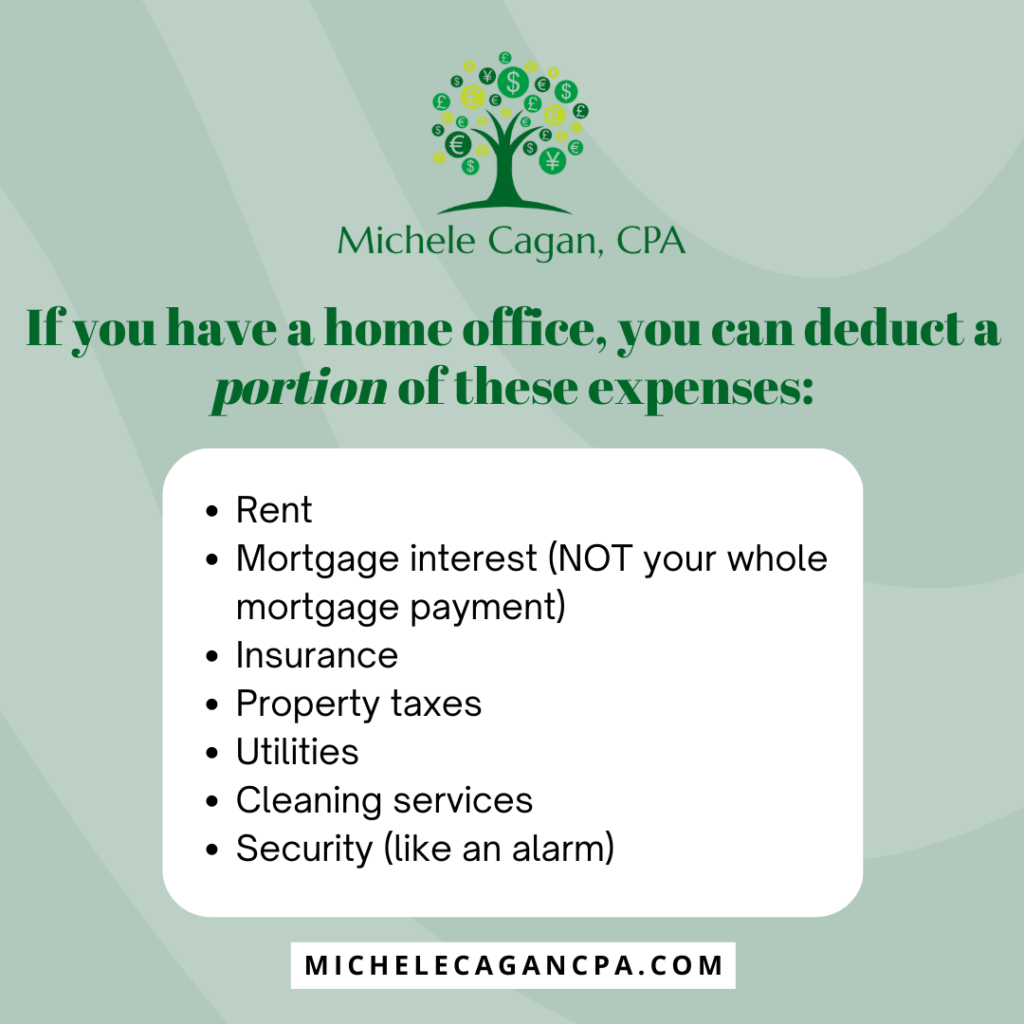If you have your own business and work from home, taking the home office deduction can lead to big tax savings. But millions of solopreneurs don’t claim this valuable tax break, even though they’re 100% eligible.
Many people don’t realize they can take the home office deduction. Others are afraid to claim it because they think they’ll get audited if they do.
The truth: If you can legitimately take this deduction, you should. Even if you get audited – which is super unlikely – you’ll probably win as long as you follow the rules. Because if you don’t, you’ll be paying extra income taxes AND extra self-employment taxes.
So what does it take to snag a home office deduction?
You have to be self-employed
If you’re an employee, you can’t take this deduction anymore, even if you do work from home. That includes being an employee of your own corporation, meaning you pay yourself through payroll and get a W2 at the end of the year. (Shareholder/owners have a different option for deducting these expenses, they just can’t do it this way.)
But if you have any self-employment income at all – even a side gig – you may be able to take the home office deduction.
Regular AND Exclusive Use
You have to use your home office regularly for work, and you cannot use that space for anything else. For example, if you do research or bill clients from your kitchen table, that wouldn’t pass the exclusive test. If you use half of your guest room for guests and half for office space, that half room would pass. So even if you’re working in a big closet or a corner of a room, measure it and take the tax break.
Main Place of Business
Your home office has to be the home base of your business – your main spot for getting work done. So if, for example, you travel to meet with clients on-site but do all of your billing, paperwork, bookkeeping in your home office, that counts as your main place of business.
And if you do meet customers (or clients or patients) in your home office or if you store inventory there, it automatically qualifies.
Those are the main points you have to be able to prove if the IRS comes asking questions. To beat them to the punch, keep records and document your home office use in whatever ways you can. Take pictures of your office space. Have business mail sent to your home address. Use your home address as your official business address on your tax return. All of that counts as evidence if you ever need it.
Doing the Home Office Math
When it comes to figuring out your home office deduction, you have two choices: the simplified method or actual expenses. Both are based on square feet, but the results can be significantly different.
The Simplified Method
This super simple option requires you to figure out one number: the square feet of your office space. Then your tax software just multiplies that by $5, and you have a quick-n-easy home office deduction.
So if your home office measures 10 ft. by 15 ft., for example, you’d enter 150 square feet. Multiplied by $5, that turns into a $750 home office deduction. It’s that simple.
The catch: You can only use this option if your office space measures 300 sq ft or less. So the maximum deduction here would be $1,500.
You can find complete IRS instructions for the home office deduction here.
The Regular Method
If your home office is bigger than 300 sq ft or you want to get a bigger deduction, use the regular method. This takes your actual home office expenses into account. Those expenses get split into two categories: direct and indirect.
Direct expenses are only for the office space. This would include things like a dedicated internet connection, painting that room, or office-only repair. You can claim the full amount of these expenses.

Indirect expenses cover your whole home, and a portion of those expenses go toward the home office deduction. This includes things like:
- rent
- mortgage interest (NOT your whole mortgage payment)
- insurance
- property taxes
- utilities
- cleaning services
- security (like an alarm)
These indirect expenses get prorated based on square footage. The ratio is the office sq ft divided by the whole home sq ft. Here’s an example with completely made up numbers:
Total indirect expenses: $12,000
Office sq ft: 300
Whole home sq ft: 1500
Indirect portion deduction = 300/1500 x $12,000 = $2,400
Not Sure If Your Space Qualifies or Have Other Questions About the Home Office Deduction?
I answer a lot of business tax questions in Chapter 6 of my book, Starting a Business 101.
I cover everything from bookkeeping to income tax, to sales tax, to keeping your tax preparer happy. Which is a really good idea, especially if that tax preparer is you.
Click on the button below to find out more about Starting a Business 101 and get your copy today.

